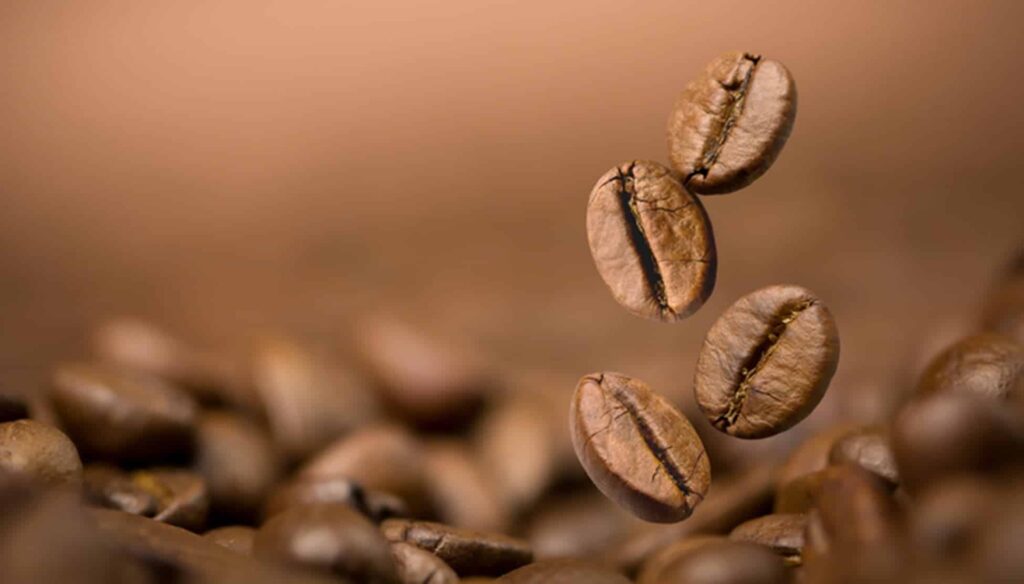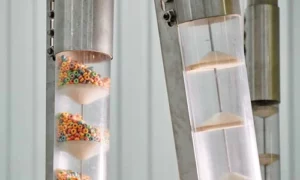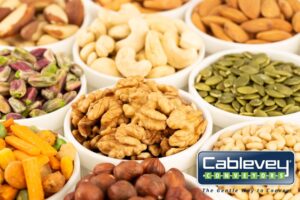How do you process coffee beans for distribution? Unraveling the journey from harvest to your cup, the intricacies of coffee bean processing play a crucial role in shaping the rich flavors we savor. As we navigate the dynamic landscape of flavor profiles, we’ll also uncover the transformative role of an advanced tubular conveying system from Cablevey Conveyors, ensuring a seamless journey from plantation to distribution.
How Do You Process Coffee Beans for Distribution?
Processing coffee beans for distribution involves meticulous methods like the dry and wet processes. From sun-drying cherries to fermentation, the journey impacts flavor. Innovations like industrial conveyor systems, such as those brought by Cablevey Conveyors, ensure efficient distribution, minimizing breakage and enhancing quality.
The Art of Coffee Processing – Unveiling Flavor Through Methodical Techniques
Growing coffee beans from seed to harvest is just one part of the entire process of delivering a specialty cup of coffee to the consumer. After harvesting the plant, the real work within the industry begins with processing. It is the process of removing the unnecessary layers of skin, mucilage, pulp, and parchment around the coffee bean. How growers choose to process the coffee will have a substantial impact on how that coffee will taste.
Coffee processors are actually growers who have the right equipment (like an automatic conveyor system) to process coffee. Sometimes, it can be a collective effort among growers, processors, and the entire supply chain, where each group provides some equipment and gains access to the processing at a site of their choosing.
Since consumers can choose among products that have been processed with different methods, we are going to cover all of them and see how they affect the flavor. We will cover the main processing techniques that most growers and processors use, even though there are countless variations of each technique.
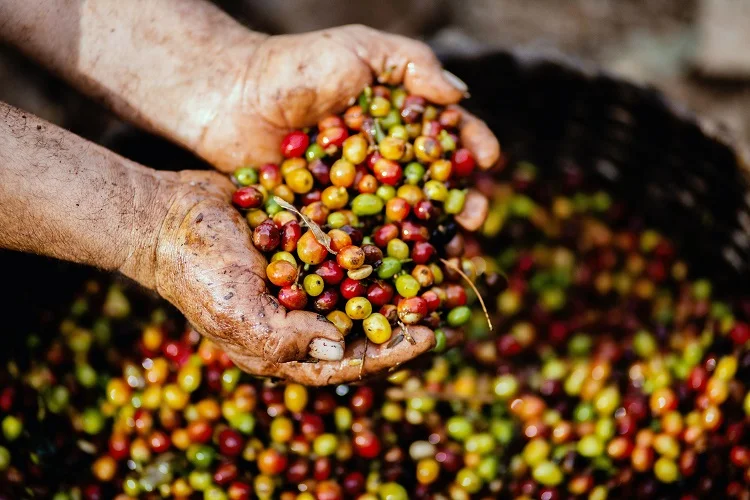
Crafting Flavor Excellence – The Journey From Harvest to Coffee Bean Processing
After it is picked from the tree, the bean needs to be processed. In the specialty coffee industry, a great deal of effort, science, and technology goes into creating various coffee flavor profiles. What inspires the ongoing development and innovation of new processes are the passionate farmers (seeking to improve quality), conscientious consumers (seeking new experiences), and attentive roasters.
At harvest, what surrounds the green coffee bean is the pulp and husk of the coffee cherry. Before preparing the beans for export or distribution, this must be removed. The two methods currently used to remove the pulp and husk from ripe cherries are the dry and wet methods. When ripe cherries have been picked, processing should begin as quickly as possible to prevent bean spoilage.
Dry (Natural) Method
In the natural or dry method, coffee cherries are laid out on an expansive surface, such as a mat, raised beds, or patio, exposed to sunlight. At night or during rain, the cherries are covered to prevent them from getting wet. This is one of the oldest techniques for processing coffee and is used to this day in countries with limited water resources. The entire process might continue for a few weeks (depending on the weather) for each batch of cherries until their moisture content drops to 11%.
- Cherry Preparation Before Drying
Before drying, coffee cherries are cleaned and sorted to separate the damaged, overripe, and unripe cherries and remove leaves, twigs, soil, and dirt. The ripe cherries can be separated by flotation, using washing channels next to the drying areas. Also, it can be done by winnowing, with a large sieve. Unwanted cherries and other materials that remain in the sieve after winnowing are taken from the top of it.
- Importance of Drying Operation
The most vital stage of the entire coffee-producing process is the drying operation because it affects the quality of the green coffee bean. Overly dried coffee becomes brittle and is easily damaged during conveying and hulling (broken beans aren’t used because they are considered defective). On the other hand, insufficiently dried coffee is too moist and prone to bacteria and fungi that cause rapid deterioration.
- Depulping and Drying of Red Coffee Cherries
When red cherries dry, they are removed from the coffee bean in a de-pulping machine. Dry-processed coffees tend to be very intense and fruitier. A great example of classic, dry-processed coffee is the one that comes from Ethiopia, which works wonderfully with espresso machines. Roasting the same beans on different roasters or with roasting processes can produce different effects. For example, different coffee roasters apply heat differently, so even if the final roasted beans look the same from each roaster, the complexity, body, and acidity are altered based on how they are roasted.
- Storage and Processing After Drying
The dried cherries are stored in special silos, where they wait to be sent to the mill, where the hulling, sorting, grading, and packaging take place. The dry method is used for producing most of the coffees that come from Brazil, Paraguay, Indonesia, Yemen, and Haiti, as well as for some Arabicas produced in Ecuador and India. When it comes to Robustas, almost all of them are processed by the dry (natural) method.
However, it’s important to know that in rainy regions where the atmospheric humidity is too high or regions where it often rains during coffee harvesting, the dry method is not practical.
The Wine Process is a variation of the Dry Process. With such processed coffee, the cherries are allowed to over-ripen on the shrub (instead of being harvested at the peak of harvest), which gives them a slightly fermented flavor and a higher concentration of sugar.
Wet Process
Utilizing the Wet Process, cherries undergo an initial softening stage in water-filled vats before proceeding through a machine for pulp and husk removal. The fruit and skin, often repurposed as cascara, are separated during this process. The mucilage typically remains on the parchment, and the bean is subsequently placed into fermentation tanks, typically large vats of water. The duration of this stage varies based on the farmer’s preferences, but it generally spans approximately 48 hours.
After fermentation, the coffee requires further washing to clean up the bean and remove mucilage residue. At this point, the coffee is ready for drying. The wet processing method is rarely seen in dry areas due to a lack of running water. For about 1-3 months, the coffee matures in the parchment in warehouses and then gets sorted, graded, scored, packaged, and shipped.
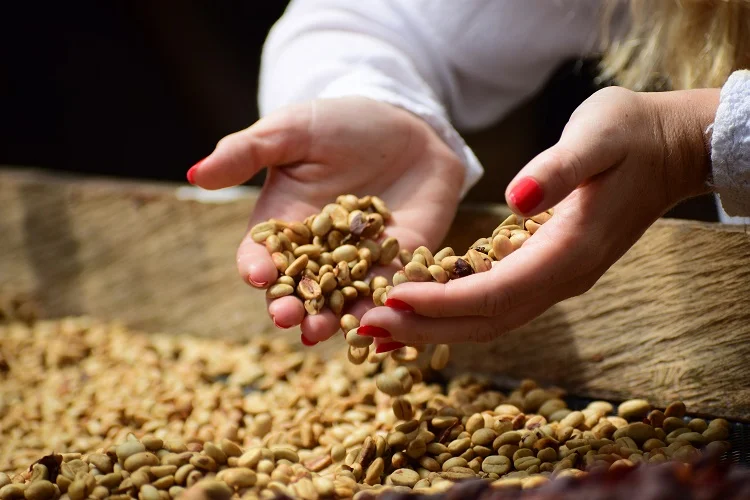
Semi-Dried (Honey, Pulped Natural Processing) Method
This approach serves as a link between natural and washed coffees. It offers a blend of the sweetness and body found in nature while preserving some of the acidity characteristic of washed coffees.
In the honey processing method, only the skin of the cherry is removed, while most of the fruit remains on the coffee. The beans are often covered with plastic and left to dry on a patio or raised beds. Some growers use hot air machines to force drying under the tables, which gives them more control over cup taste and profile.
During the drying process, the beans need to be moved constantly to prevent fungal and mold infections. They are usually racked about 2-3 times every hour. Most smaller coffee farmers in Papua, Flores, Sulawesi, and Sumatra use this method. Depending on the amount of pulp left on the coffee, honeyed coffee can be classified as:
- White – Almost completely washed with a fraction of ferment concentration,
- Yellow, orange, and red – Somewhere in between white and black,
- Black – Almost fully natural with a bit more complexity, restraint, and elegance.
Black Winey Process
After being picked, the ripe red cherry is placed into a polystyrene bag. Then, it’s left to turn black and develop winey traits. It is then put on raised beds and left to dry to approximately 11% moisture content. When rested for four weeks, the enzymes have enough time to settle down and balance.
At that point, the coffee is sorted, graded, scored, and packaged. Coffee processed with a black winey processing method has low acidity and a well-balanced ferment, which gives it exceptional enhanced sweetness.
Decaffeination Process
The decaffeination process targets green coffee beans, commencing with steaming and subsequent rinsing using a specialized solvent to extract caffeine while preserving other constituents. This cycle is iterated approximately 8-12 times, achieving a caffeine removal of 97% (U.S. standard) or 99.9% (EU standard) from the bean.
Trying to separate the caffeine while leaving other chemicals (such as proteins, cellulose, sucrose, tartaric acid, citric acid, and formic acid) at their original concentrations is the greatest challenge of the decaffeination process. Most decaffeination processes use ethyl acetate, CO2, activated charcoal, and methylene chloride as decaffeinating agents.
In the natural type, the most used decaffeination process uses sCO2 (supercritical carbon dioxide). The process is advantageous because it avoids the use of harmful substances, but because it is costly, it is mostly used to decaffeinate large amounts of commercial-grade types of coffee).
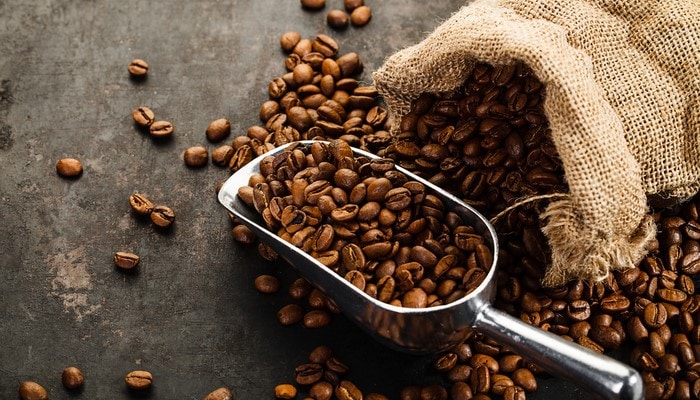
Choose the Most Suitable Conveyor Technologies for the Optimal Material Handling
Using the right conveyor system in quality coffee processing plants and sites is necessary, especially for dried coffee, which is prone to damage due to brittleness. Cablevey’s cable and disc tubular conveyor technology is used in countries across the world because it prevents coffee bean breakage, enhances cleanliness, and gently transports materials. Our automated conveyor systems can be designed to fit the spatial requirements of any facility and minimize financial losses resulting from bean degradation and breakage. Contact us and find out why our conveyor engineering solutions are the best option for your material handling needs.

